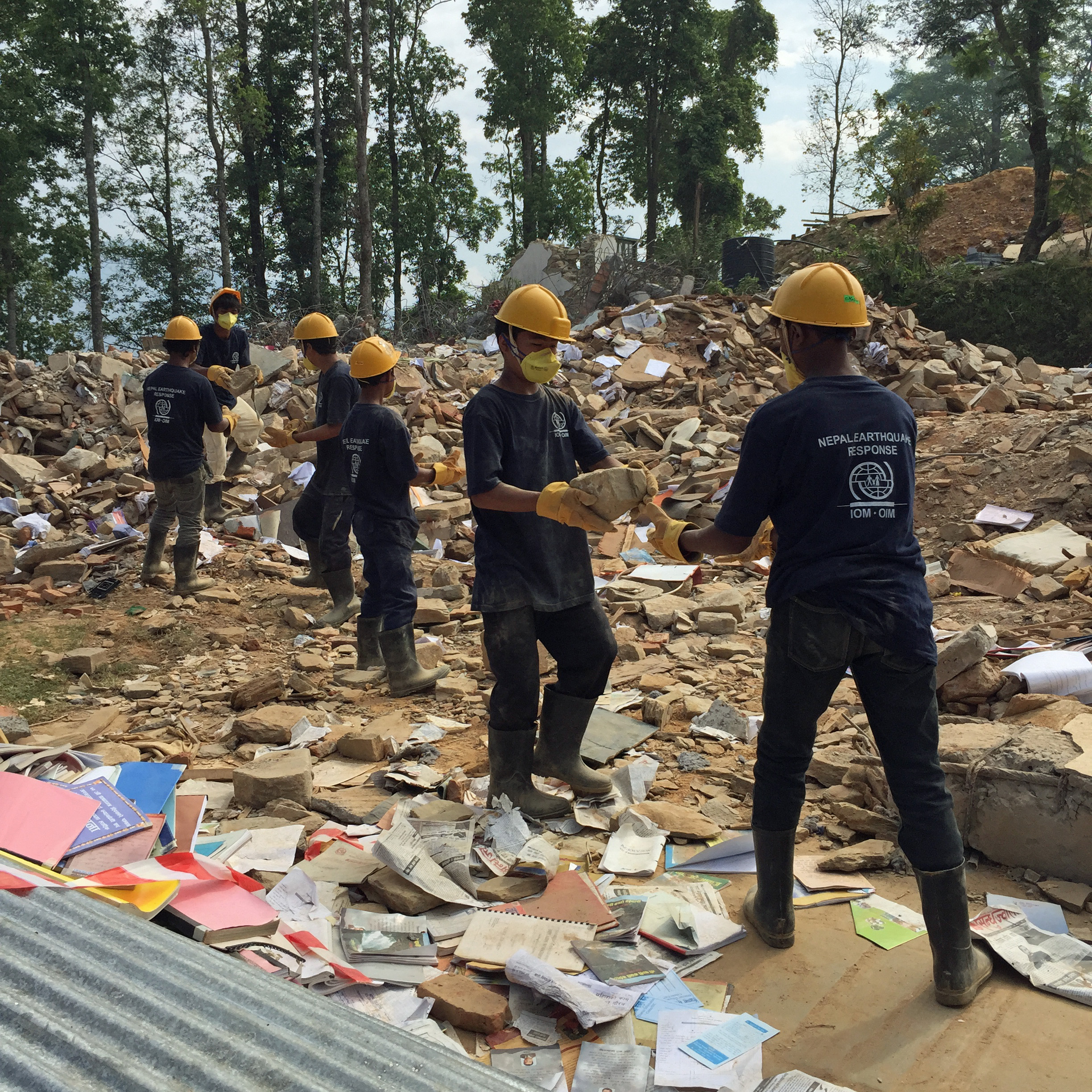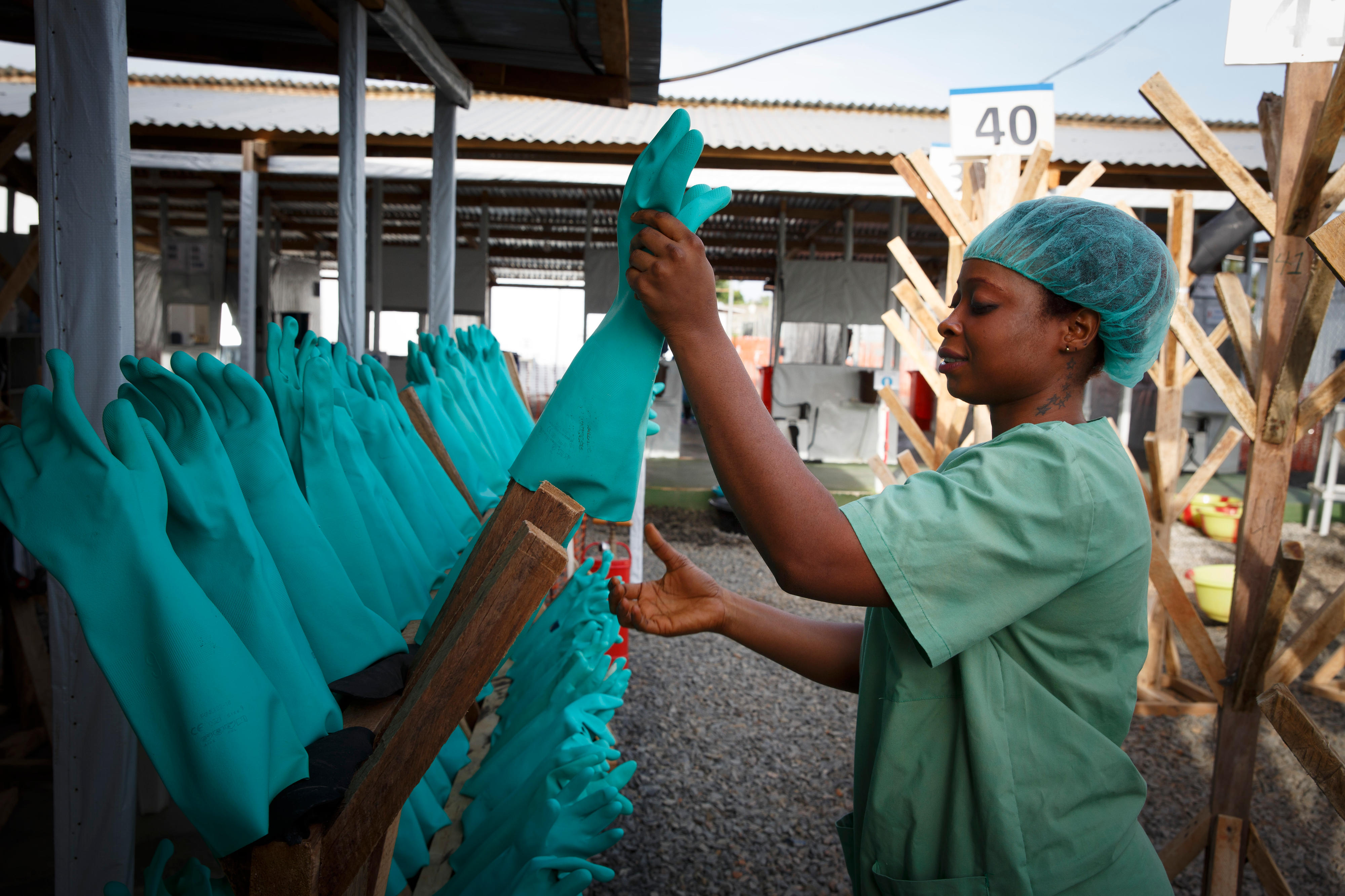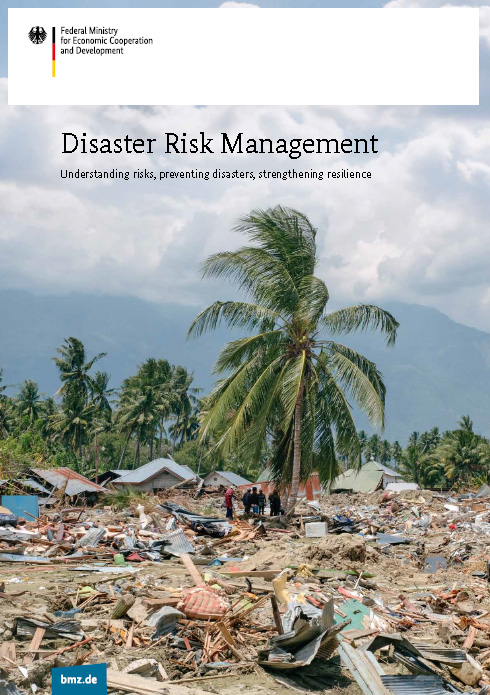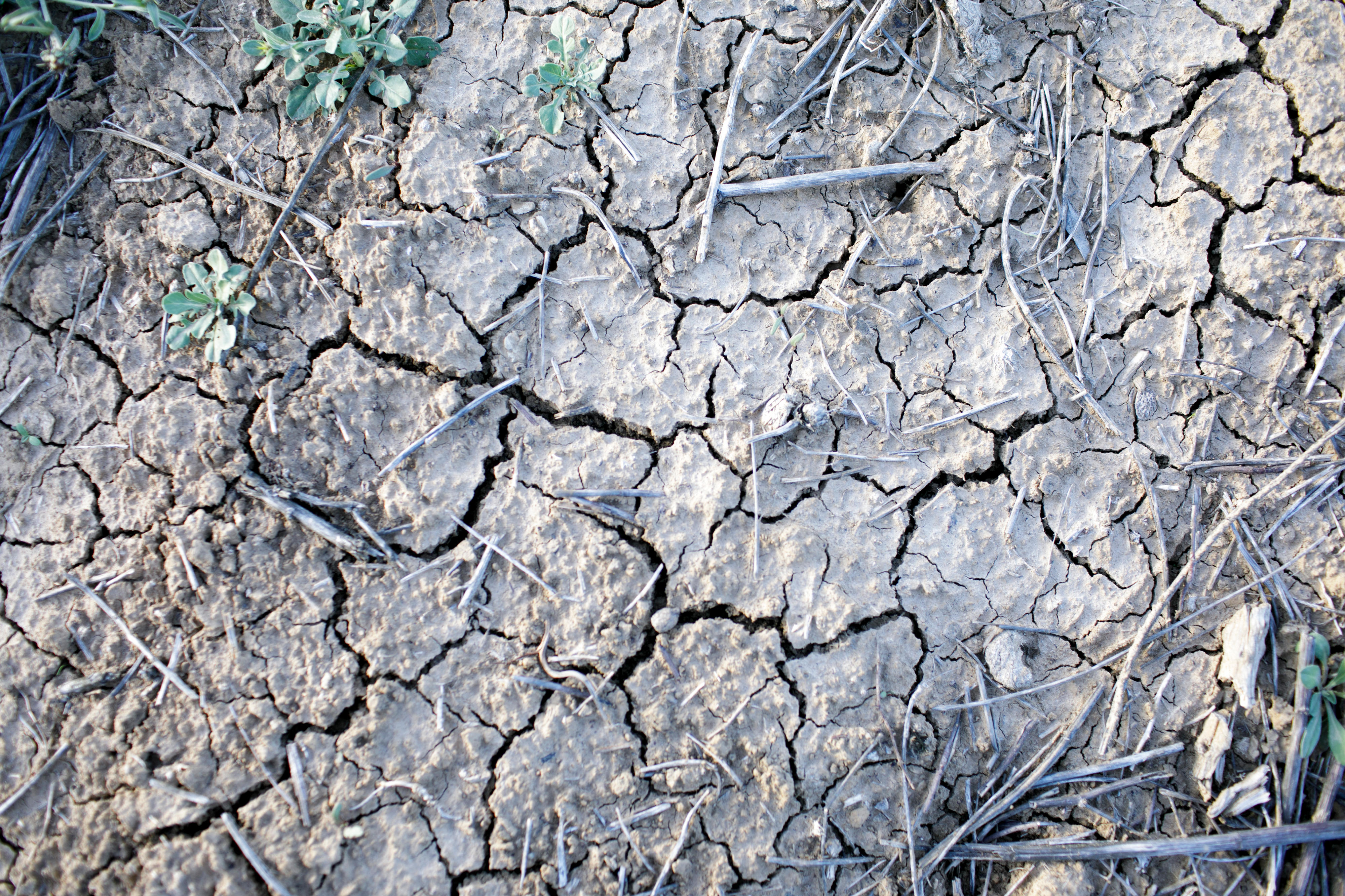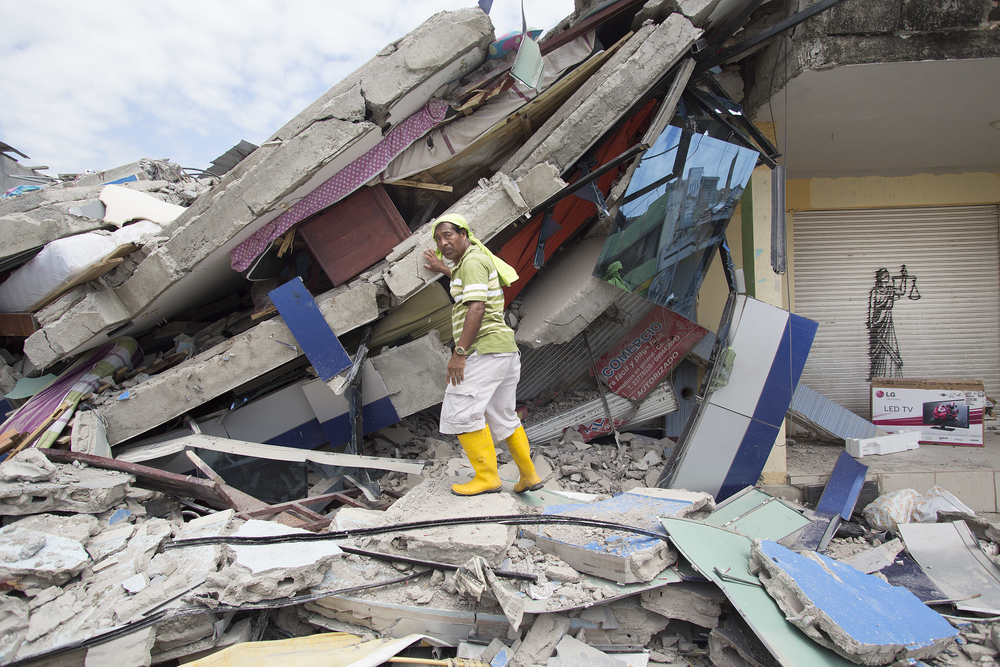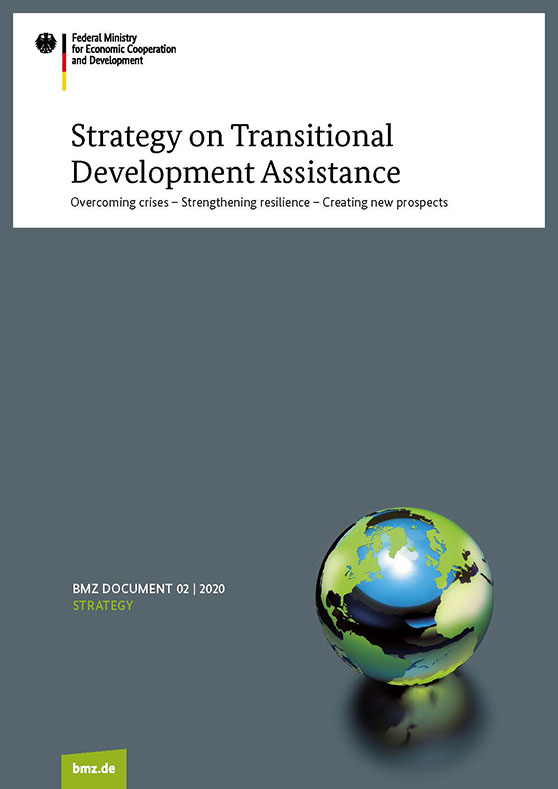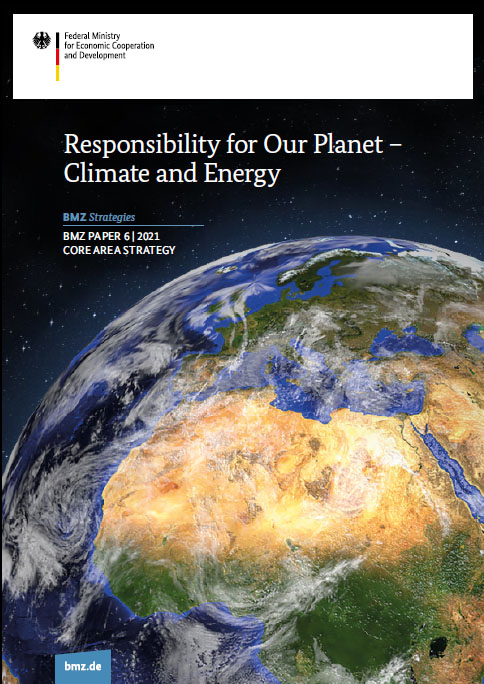The International Organisation for Migration (IOM) is helping to move rubble in the town of Chautara after the heavy earthquake in Nepal in 2015.
Copyright© Zoe Paxton/DFID, CC BY 2.0, via flickr, image section
Disaster Risk Management Preventing disasters – enabling sustainable development
In recent years, the world has seen a particularly marked increase in weather-related and climate-related disasters. There has also been a rise in the number of people contracting or dying from infectious diseases like Ebola or SARS. The COVID-19 pandemic, with all its social and economic implications, has starkly highlighted what a negative impact all these disasters can have.
Disaster: A serious disruption of the functioning of a community or a society at any scale due to hazardous events leading to one or more of the following: human, material, economic and environmental losses and impacts.
Rubber gloves drying in a German institution for the treatment of Ebola patients in Monrovia, Liberia
When industrialised countries experience disaster, the damage inflicted on health and physical assets is largely covered by insurance and social protection systems. Developing countries, however, generally do not have the means required to tackle acute crises on their own. If homes, roads, schools, hospitals, factories, farmland, water pipes and electricity lines are destroyed, people lose their livelihoods and struggle to survive.
Extreme natural events often result, in the first instance, in a tragic loss of human life. Then, the knock-on effects emerge: poverty, inequality, undernutrition, homelessness, disease, forced displacement, migration, armed conflict. These all further erode the resilience of particularly vulnerable groups, which diminishes their chances of leading a better life with more equal opportunities.
A comprehensive approach
The concept of Disaster Risk Management has been developed In German development cooperation to tackle disasters and their negative impact. The aim is to stop extreme events endangering human lives, causing economic and environmental damage and repeatedly destroying all the development gains that have been achieved in the partner countries.
Disaster risk management is a cross-cutting issue relevant to many areas of German development cooperation. The Federal Ministry for Economic Cooperation and Development (BMZ) takes a holistic approach to managing disaster risk management, drawing together a multitude of strategies and instruments from a range of areas: policymaking, business and economics, poverty reduction, social protection, urban development, the environment, climate change adaptation, education and health.
Partner country governments are supported in adapting their national policies on disaster, climate, urban planning and development so as to take greater account of risks like climate change, population growth and pandemics. The aim is to make people more resilient, empowering them to overcome crises using their own resources and to safeguard existing development gains.
One special focus of German development cooperation in this context is highly vulnerable people and groups: women, children, the elderly, the LGBTIQ+ community, indigenous people, people with disabilities and those living in extreme poverty. All of them must be actively involved in disaster risk management processes and their specific needs and abilities must be reflected.
At international level, the BMZ is a strong advocate of greater coherence between international agreements such as the 2030 Agenda, the Paris Agreement and the Sendai Framework for Disaster Risk Reduction (External link). In order to reduce the burden that implementing all these agreements places on partners, it is important to clearly define responsibilities, share data, coordinate reporting systems and align financing instruments.
The BMZ’s main partners in the field of disaster risk management include the Global Facility for Disaster Reduction and Recovery (GFDRR) and the United Nations Office for Disaster Risk Reduction (UNDRR).
Development cooperation instruments
One key concern for the BMZ is that the short-term, medium-term and long-term aid provided following a disaster be well coordinated. That means dovetailing the humanitarian aid provided by the Federal Foreign Office with development cooperation and long-term projects, for example in the form of what is termed “transitional development assistance”. For disaster risk management to be effective, it is vital for all stakeholders – be it government, public authorities, business, science and research or civil society – to work together closely at local and national level.
The following disaster risk management instruments are used in German development cooperation:
Risk analyses
- Calculating the probability of extreme natural events and the level of vulnerability of the society concerned
- Identification of different ways of rapidly tackling the consequences of a disaster
- Close involvement of the local community
Disaster prevention, mitigation and adaptation
- Technical measures (for example building dykes, protective walls or safe and secure school infrastructure)
- Ecosystem-based approaches (for example planting mangrove forests as protection against flooding and erosion)
- Laws and regulations (including restrictions on land use in flood zones and near steep slopes, climate-resilient urban development, building regulations in earthquake-prone areas, establishment of systems of basic social protection)
- Information and awareness-raising campaigns, support for local groups and organisations working in the field of community-based disaster risk management
Emergency preparedness
- Establishment of early warning systems (for example for natural hazards such as tsunamis or for containing pandemics)
- Establishment of emergency and evacuation plans, for example for hospitals, schools and tourist facilities
- Training for staff working in emergency services and civil protection
- Building up of food and medication reserves
- Establishment and expansion of adaptable social protection systems and programmes
Disaster-resilient recovery
- Establishment of improved infrastructure that secures the livelihoods of communities over the long term and is safe from being destroyed again in the future (for example by ensuring new roads or new areas for crop cultivation are protected from flooding or landslides)
- Reconstruction driven by public job creation programmes
- Strengthening of communities’ social and economic resilience through societal transformation (for example mediation where there is a risk of conflict arising over the resource use)
Risk transfer
- Establishment of insurance instruments and risk funds to shift the financial burden from the individual to the community; more information can be found here
Further information
Publications and websites
- United Nations Office for Disaster Risk Reduction (UNDRR) External link
- PreventionWeb | UNDDR knowledge sharing platform for disaster risk reduction External link
- Sendai Framework Monitor External link
- United Nations Central Emergency Response Fund (CERF) External link
- Global Initiative on Disaster Risk Management (GIDRM) External link
- Global Facility for Disaster Reduction and Recovery (GFDRR) External link
- EM-DAT: The International Disaster Database of the Centre for Research on the Epidemiology of Disasters (CRED) External link
- When disasters and conflict collide | Information from the Overseas Development Institute (ODI) External link
- Global Network of Civil Society Organisations for Disaster Reduction (GNDR) External link
- Coalition for Disaster Resilient Infrastructure (CDRI) External link
- International Federation of Red Cross and Red Crescent Societies (IFRC) External link
- World Disasters Report 2020 | A publication of the International Federation of Red Cross and Red Crescent Societies External link
- Disaster, Conflict and Fragility: A Joint Agenda | A publication of the GFDRR in cooperation with the BMZ and GIZ PDF | 1.1 MB | 46 pages External link
- Managing the Risks of Extreme Events and Disasters to Advance Climate Change Adaptation | A publication of the IPCC External link
- Managing the Risks of Extreme Events and Disasters to Advance Climate Change Adaptation – Summary for Policymakers | A publication of the IPCC PDF | 11.5 MB | 20 pages External link
